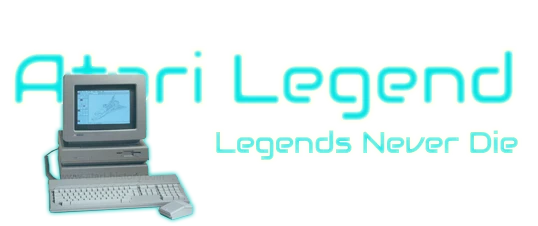

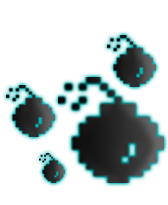





A while ago, we did a full retrospect on Alien Breed clones for the Atari ST. If you missed out on that video, go check it out now. Today, we conclude the story on one of those games, Alien Blast. Francois Wunschel was the graphics artist for this project and he shares another great deal of insight in the making of this game, filled to the brim with ST and demoscene nostalgia.
There is currently no profile available in our database
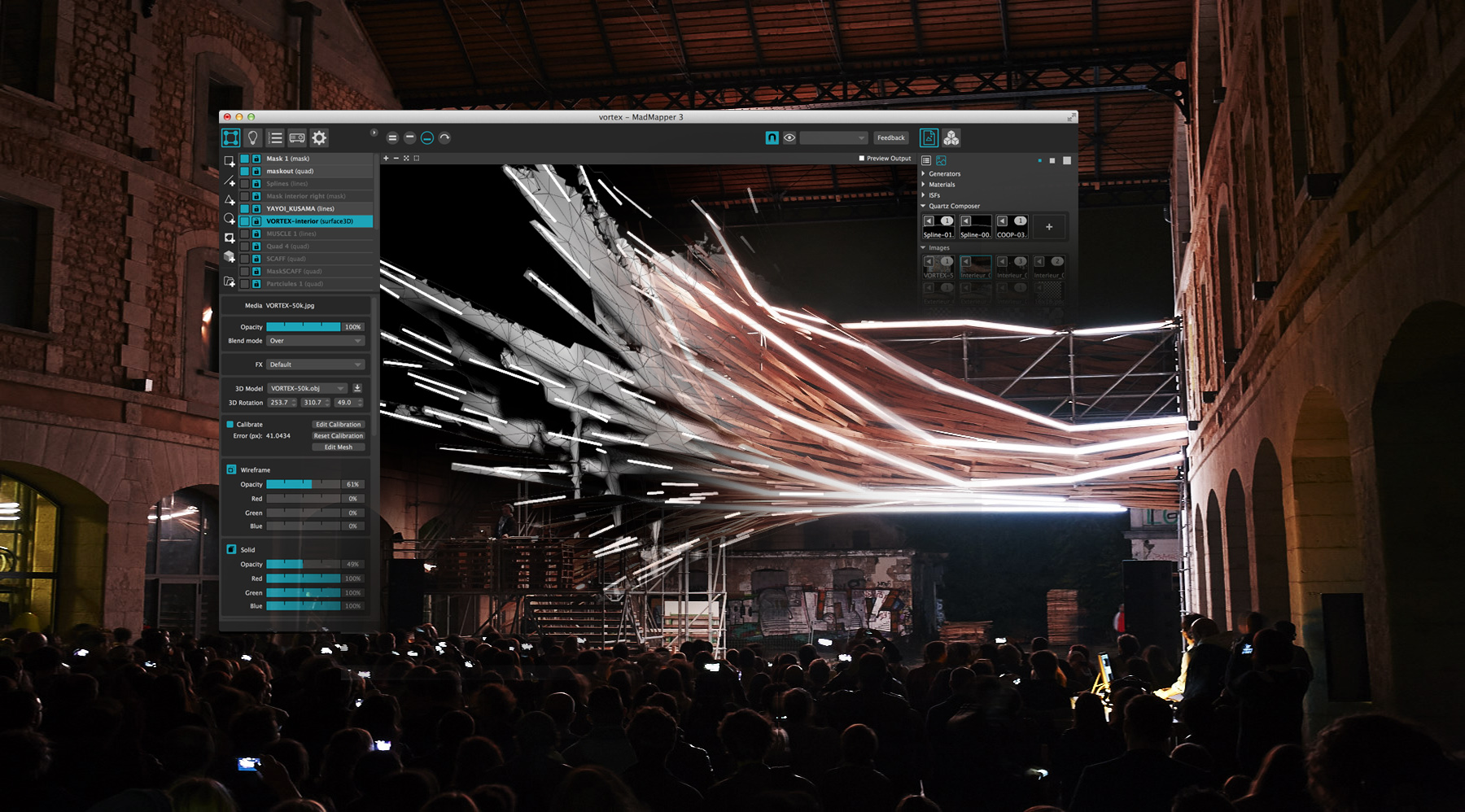
One of the many impressive architectural installations with light effects from the company 1024 Architecture.
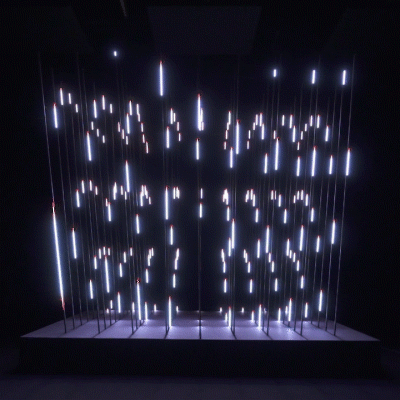
"Core is a sensory and visual journey, which implements a new technology of music spatialization with dynamic volumetric light." by 1024 Architecture.
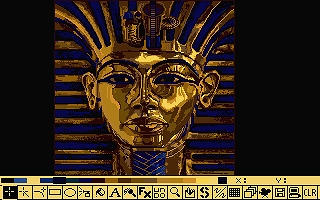
The famous Tutankhamun mask in the art package Deluxe Paint, which was used by Francois to create Alien Blast.
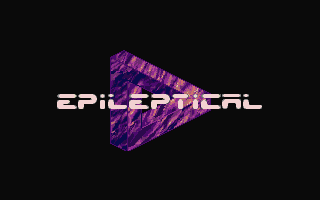
Francois, Matthieu and Jay called themselves Epileptical, because 'there was a big buzz and controversy about video games that could potentially cause epilepsy'.
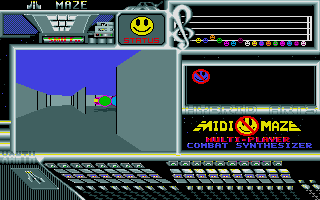
The guys had so much fun playing multiplayer Midimaze, Alien Blast would at least have a 2 player mode!
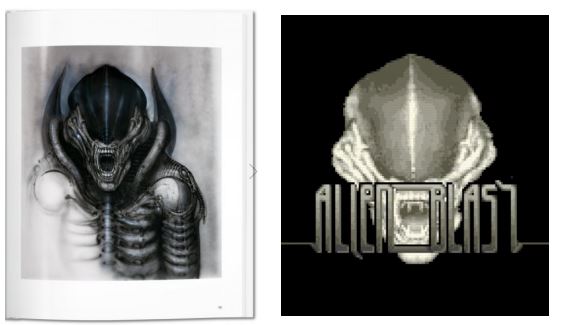
The graphics were heavily inspired by the Alien movies. The intro picture was even ripped using a hand scanner from Francois' H.R.Giger book.
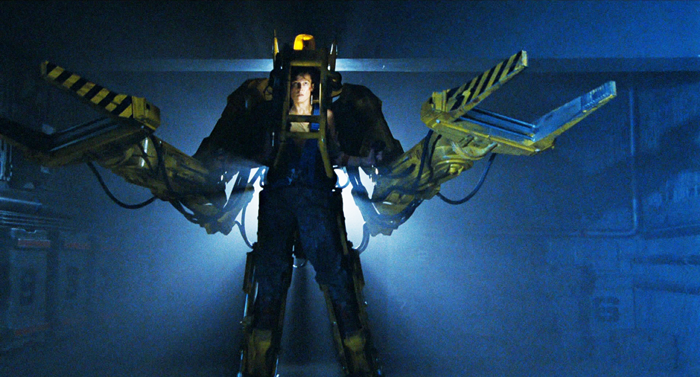
The exoskeleteon robot from the movie Aliens appears at the end of Alien Blast as well, but I have not managed to make it that far yet!
Before we begin, a little disclaimer from Francois himself : 'All of this happened almost 30 years ago, please pardon my inaccuracies, what I forgot and what my mind made up from memories.'
1) Hi François, can you please introduce yourself to the people who haven’t heard from you before?
Hi, I’m Francois WUNSCHEL, French media artist and architect, born in Strasbourg. I mastered Architecture in 2003, dived early into architectural computer rendering, created a CGI company named Chateau Cyborg in 2005. Then I moved to architectural installations and scenography and created a company named 1024 architecture, which in 2010 co-created, along with Swiss-based developer garageCube, a realtime video and light mapping software, the MadMapper. Then in 2015, the company created a Raspberry Pi-based autonomous video mapping player called the miniMad. And finally in 2021 we just released the MadLaser, allowing artists to control and live code graphics for laser systems.
2) Did you own computers before the Atari ST? And if so, which ones? When did the journey with computers begin for you? And when and why did you (eventually?) buy the Atari ST?
I remember vividly my very first encounter with a computer: I was 4 years old and discovered a MO6 at a Christmas party at school. The thing even had a digital pen to draw .. directly on the CRT monitor! I fell in love instantly. At 6 years old I engaged in a computer class at that same school. We played educational games on the MO6 and TO7 computers. The programs had to be loaded from cassettes, so it took quite a long time to load applications, we had to be patient!
My first personal computer was indeed an Atari 520 ST that my parents bought me. I had other friends who had the same computer (some also had a CPC6128 or an Amiga) so we were swapping disks, games mostly. Cracks were mandatory, as games were quite expensive for teenagers. And cracks came with cracktros and intros, by groups like Fusion. I found these to be very creative and stimulating, sometimes way better technically than the game on the disk, with colourful raster graphics and cool music.
3) Were you already creating things on computers before you started with on Alien Blast project?
Yes, I met a guy named Jay Jaymz at a computer party in another friend's garage, when I was aged 13. As an anecdote, I remember that I came there by bus with my ST under the arm, cables and mouse in my pocket. The ST was a mobile computer, just like a laptop ![]() Jay Jaymz introduced me to the TCB Audio Tracker, a tool to write MOD tunes. I was simply amazed. Digging a bit made me discover that TCB was a demoscene group, and that the tracker was developed and used by a guy called Ancool (who produced the M demos).
Jay Jaymz introduced me to the TCB Audio Tracker, a tool to write MOD tunes. I was simply amazed. Digging a bit made me discover that TCB was a demoscene group, and that the tracker was developed and used by a guy called Ancool (who produced the M demos).
That’s how I really got interested in the ST demoscene, with mythical groups like The Lost Boys, TCB, The Pendragons, Delta Force. Demos such as O Crickey Wot A Scorcher, The Dark Side of the Spoon, The Cuddly Demos, My Socks Are Weapons. Graphics and music were fantastic in the demos, way better than what most games were able to do. The demo artists were pushing the 68000 to the max in a refreshing way (remeber the TCB-TLB fax war?). It seemed like the future, and I wanted to be part of it. I wanted to “do” a demo. But to do a demo you needed a coder. That’s how I met Matthieu Isorez, who knew GFA Basic, had an Atari and happened to study at the same high school.
4) So you met Matthieu Isorez in highschool? But what do you remember from those days? Did you do anything before the Alien Blast game with him?
With Matthieu we worked on a demo project. He introduced me to Deluxe Paint, and I started to draw computer graphics for our crew, that we called HCL. We didn’t go far on the demo project, but became good friends and incidentaly found out we were both fans of Sci-Fi movies, such as BladeRunner (remember that Atari logo in the film?) and .. Alien. So when Alien Breed - by Team17 - came out for the Amiga 500 we were in shock! We wanted to play this game so badly and were so disappointed realising it would never be ported on the ST … Damned Amiga! As a challenge, Jay proposed to make the port ourselves, for our own pleasure and by sheer spirit of revenge over the Commodore computer. Matthieu would do the coding and I would do the graphics, Jay would do some prototyping, finding routines here and there. We would call ourselves Epileptical.
5) What can you tell us about the history of Alien Blast? We know its origins now but do you have any cool anecdotes, details or fun memories you like to share with the fans?
I started by gathering study materials in the form of computer games magazines, such as Tilt and Joystick, and in the form of books by H.R Giger who designed the alien creature. Then with a magnifier (!) I copied pixel by pixel a sample floor tile from a photo in Deluxe Paint. It was a 16x16 pixels tile in 8 colours -a gradient of metallic blue-gray tones-. The ST had 16 color graphics (over a 4096 Colors palette), so we decided to have a 8 color gradient plus 8 other colours used for characters and props.
With that tile Matthieu expanded on properly coding a scrolling system initially prototyped by Jay, usable with a joystick. We first tried to have a nice hardscroll, where all the tiles are loaded in memory, allowing for a smooth 50fps experience (aka 1 VBL), but it turned out that it would be limitting the map size way too much. So we settled for another sytem, where the viewed portion of the level is processed each frame, that unfortunately wouldn’t allow for 50 fps, but ran at 2 VBL, or 25 fps.
It was also extremely important that the game was a 2 player experience. Multiplayer games were scarce and appreciated. We used to hold computer parties over the week end at my house or at Matthieu’s, and played MidiMaze frantically. That game could be played by 8 players simultaneously using a home made network made of electric cables roughly plugged into the MIDI ports of the ST! It was the real ancestor of modern multiplayer FPS, such as CoD, Battlefield…
6) Alien Blast is extremely professional looking, featuring a very atmospheric animated intro with digitized graphics? Are you also responsible for this? Some of these images were ripped from the Alien movies, right?
I’m responsible for all the graphics in the game. We wanted the intro to feel cinematic, just like a movie. Since I had the original Alien book, I managed to find a hand scanner and manually digitized a HR Giger drawing. We were passionate kids and didn’t have any idea of intellectual property, we were doing a game for fun, using all the possible techniques we had at hands. We took great care of the title animation and mimicked the original movie to make it look like a legit port of the Alien franchise. Romain Moreau composed an atmospheric ambient track for the intro using a MIDI keyboard on his ST. As far as I remember the game was STe only in the end because we wanted to be able to play real audio samples, also recorded by ourselves. I’m actually doing all the voice 'acting' in the game. We also digitised some video footage of my face with soldier gear and helmet, which was supposed to be overlaid on the top right corner of the screen, but the effect was too distracting and resource heavy. It didn’t make it in the final version of the game.
The project led me to my very first use of a 3D package: I used CyberSculpt to model the grenades, that you can buy in the in-game computers. It was also used to make a background guide for the station graphics. It was probably the slowest program ever: you had to wait 10 minutes for it to generate a 3D shape…
As an anecdote, I remember we added some sort of Konami code in the game. You can enter the password sahlulegatvogonsthyr ( Sahlu-leGat Vogon Sthyr, French translation of Prostetnic Vogon Jeltz from the Hitchhicker’s Guide to the Galaxy) to unlock infinite life and ammo.
7) Of all the Alien Breed clones on the Atari ST, Alien Blast is by far the best looking of them all and the most true to Alien Breed. Yet, the graphics were not ripped, and all created from scratch. I almost can not believe it. Where did you learn this? Please tell us more about the work you did. Are you still proud of the end result? What was the hardest thing to create? …
I started by copying the graphics, learning how to deal with it, then went creative and imagined graphics of my own. I worked with the 16 color limitation of the ST (the Amiga had 32 colors). I drew most of the sprites in Deluxe Paint, using 15 colours, as there was no alpha channel by the time and the last color had to be kept for chroma keying transparency. The only ripped graphics was the animated explosion sprites, ripped from a game I unfortunately forgot the name. The background tiles were started in Deluxe Paint, however, we had an internal editor to compose the levels from the available tiles. Since the process of exporting from DeluxePaint to ours felt kind of tedious, Matthieu developed a little drawing app - just like Deluxe Paint - directly into our level editor, coded in GFA Basic - while the actual game was a mix of 68000 Assembly and GFA Basic. This alone boosted productivity and allowed us to finally finish the game. I drew more than 650 different 16x16 tiles and numerous 32x32 sprite sheets.
8) Alien Blast was released in 1996, a time when the Atari ST was completely dead. Yet work on the game began in 1993. According to Matthieu only 2 or 3 copies were ever paid for (it was shareware). Do you remember how you felt when you guys finally finished and released the game? And have you ever gotten any cool feedback that you remember?
I think work even began in 1992. I took us almost 4 years from start to finish, working mostly on the week ends. I started the project when I was 14 years old, so it was my first real long term project. It was very challenging not to give up, especially when you transition from teenage to young adult. I’m proud we did finish the game, however, to be honest, we never really played this game fully: the fun was to make it, not to play it.
In retrospect, I think it looks and sounds gorgeous - given our time and skill constraints - but I’m surprised it got any momentum since it has a bad gameplay. The player moves too slow - although it does play better on an Atari Falcon. The gameplay mechanics are very limited: find keys to open doors, grab money to buy keys and ammo. Find your way to the elevator. That’s it. I wonder if anyone ever got to the end and played the final fight against the Alien Queen using an exoskeleton (yes, that one from Aliens Return). That exoskeleton is the very last graphic I drew for the game, I still remember the week-end I did it … Nostalgia. In the end my data consisted of more than 60 disks of graphics, sprite sheets etc… Unfortunately I lost all my disks .
We contacted a French distributor to sell the game once finished, but were told we had to re-do all the graphics, for obvious intellectual property reasons. This sealed the project. Shareware would be the way to go.
9) You called yourselves Epileptical. Do you remember why? Where did the name come from?
In those times there was a big “buzz” and controversy about video games that could potentially cause epilepsy. Warnings had to be printed on some of the boxed games. Parents were in fear! We found that funny and to surf on the buzz we called the group “Epileptical”.
10) What did you do after the release of Alien Blast? Did you continue creating graphics for games?
Composing levels for Alien Blast gave me a spark for architecture and urbanism, so I studied and graduated in Architecture, then created computer graphics … for architects. I mastered modelling, rendering and compositing along with some architectural skills. Then slowly drifted to realtime graphics, party visuals and VJing (for which I created a little app called Cowboy Bitmap to play videos in realtime).
11) What are you up to these days? What do you do for a living? I have seen you are doing amazing stuff with lighHng and video, can you elaborate on this?
The company I co-founded specialises in realtime graphics. We use them for outdoor installations, sculptural work, robotics, video mapping on buildings.
I even make live theatrical show using realtime generative shaders, that can be coded live using the software I co-designed, MadMapper. Here’s a trailer.
All graphics and music are generated in realtime. No 3D mesh or texture used, this is totally parametric. The show is on tour at the moment, so it might come to a venue near you someday. I also worked on a nodal engine to generate graphics, that we called ZONK in homage to the homonymous demo by Spaz from 1991. And yes, this demo can actually cause epilepsy ![]() . The project was cancelled unfortunately.
. The project was cancelled unfortunately.
12)Do you still play computer games? And if so, what is your favorite one, classic and/or new? And do you still have your Atari ST?
Here are my top games of the last decade:
Inside (Playdead)
Journey (ThatGameCompany)
Fallout New Vegas (Obsidian)
Death Stranding (Hideo Kojima)
On Atari my fav games were (in no particular order):
Rick Dangerous
Gods
Speedball 2
Sim City
Captain Blood (by Philippe Ulrich, who used to sacrifice computers)
Another World
Prince of Persia
Vroom
Virus
Xenon 2
E-motion
Trex Warrior
B.A.T with the external MV16 sound card!
and … Maupiti Island (Lankhor game, graphics by Dominique Sablons). That last game was so hypnotic and striking as a child, beautiful graphics and generative audio speech, that when I turned 40 I actually travelled all the way to the actual island, in French Polynesia. I was not disappointed !
13) Just for fun, if you could have a drink with anyone, alive or dead, who would it be and what would you ask?
I’d have a drink with Charles Bukovski who wrote the most beautiful poem about computers: 16-bit Intel 8008 chip.
14) Do you have any final words you like to share with the Atari ST community?
The Atari ST was a great platform for kids to develop creativity. From music to graphics, to design and coding, it had a tremendous impact on a generation of artists. It truly shaped the roots of my professional career. Today I still own an Atari vintage T-Shirt. I also would like to thank the community for reading this. Cheers
Thank YOU, Francois, for sharing your memories and keeping the history alive!
Check out the Alien Breed clones video for even more details on Alien Blast.
August 5, 2025 by grams88
Martin Brownlow is a living legend. Best known among ST fans for creating the beloved PD/shareware classics Grav and Grav 2, his games are still cherished by many to this day. From a young age, Martin knew he wanted to make games for a living...and he made that dream a reality. In fact, he’s still doing it today. Discover the full story and much more in this exciting new interview.
October 4, 2024 by grams88
Stacey Jamieson began his career at DMA Design, working on titles such as Oh No! More Lemmings, Walker, GTA and others. Over the years, he moved on to Electronic Arts (EA), where he contributed to major games like the Star Wars Battlefront series, Mass Effect, and Need for Speed. Today, he is the co-founder of Expression Games, where he continues to pursue his passion for game development. What an exciting career!
July 29, 2024 by grams88
Who doesn't love a good underdog story? Chris Sharp is a noteworthy apprentice of the renowned François Lionet, as he mastered the art of coding with the almighty STOS Basic. Chris crafted a few games for our cherished ST, including fan favourites like Magic Tomb and the Freaked Out series. Intrigued? Dive into our interview to revisit the era when game development could still be a solo endeavour.
July 16, 2024 by grams88
When Sega released its Master System, it came bundled with the game Alex Kid. To this day the game remains very popular, loved by many. One of those people is Terry Lloyd. More so, Alex Kid was the main inspiration for the Atari ST platform classic Axel's Magic Hammer. But that is just one of his many accomplishments. Terry has been around the block. Working as an artist and game designer at the beginning of the 80's for Gremlin Graphics, he then moved on to Core Design, which he helped get off the ground. During the 90's he contributed to founding the company Malibu Interactive. On the Atari ST, Terry's resumé include Dynamite Dux, Car-Vup, Rick Dangerous 1 & 2, Torvak the Warrior, WarZone and many more. Read all about this veteran of the games industry in this exciting interview.
April 18, 2024 by grams88
It doesn't always have to be about computers, coding and graphics. Adrian Powell, the artist behind the original Lemmings game, crafted all its artwork, including box art and promotional materials. His passion for painting lemmings has persisted over time and he is still painting lemmings to this day. Powell's work remains influential and has helped selling millions of copies of this classic (ST) game.
Currently 0 registered users online
In the past 24h there were 1 registered user online